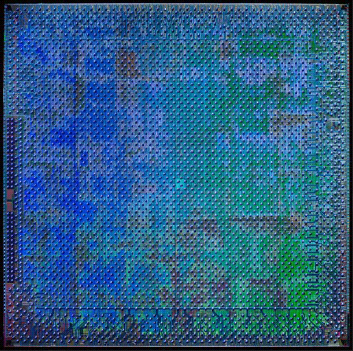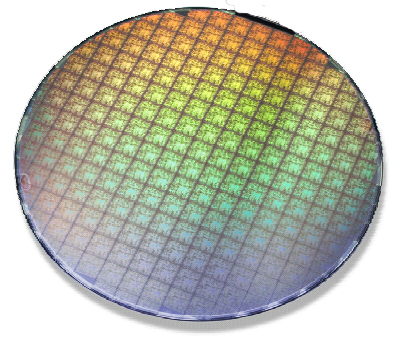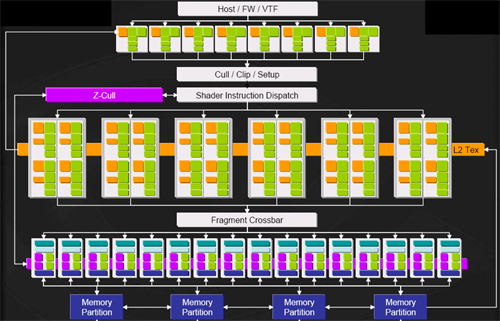NVIDIA's GeForce 7800 GTX Hits The Ground Running
by Derek Wilson on June 22, 2005 9:00 AM EST- Posted in
- GPUs
The Pipeline Overview
First, let us take a second to run through NVIDIA's architecture in general. DirectX or OpenGL commands and HLSL and GLSL shaders are translated and compiled for the architectures. Commands and data are sent to the hardware where we go from numbers, instructions and artwork to a rendered frame.The first major stop along the way is the vertex engine where geometry is processed. Vertices can be manipulated using math and texture data, and the output of the vertex pipelines is passed on down the line to the fragment (or pixel) engine. Here, every pixel on the screen is processed based on input from the vertex engine. After the pixels have been processed for all the geometry, the final scene must be assembled based on color and z data generated for each pixel. Anti-aliasing and blending are done into the framebuffer for final render output in what NVIDIA calls the render output pipeline (ROP). Now that we have a general overview, let's take a look at the G70 itself.

The G70 GPU is quite a large IC. Weighing in at 302 million transistors, we would certainly hope that NVIDIA packed enough power in the chip to match its size. The 110nm TSMC process will certainly help with die size, but that is quite a few transistors. The actual die area is only slightly greater than NV4x. In fact, NVIDIA is able to fit the same number of ICs on a single wafer.

A glance at a block diagram of the hardware gives us a first look at the methods by which NVIDIA increased performance this time around.

The first thing to notice is that we now have 8 (up from 6) vertex pipelines. We still aren't vertex processing limited (except in the workstation market), but this 33% upgrade in vertex power will help to keep the extra pixel pipelines fed as well as handle any added vertex load developers try to throw at games in the near future. There are plenty of beautiful things that can be done with vertex shaders that we aren't seeing come about in games yet like parallax and relief mapping as well as extended use of geometry instancing and vertex texturing.
Moving on to pixel pipelines, we see a 50% increase in the number of pipelines packed under the hood. Each of the 24 pixel pipes is also more powerful than those of NV4x. We will cover just why that is a little later on. For now though, it is interesting to note that we do not see an increase in the 16 ROPs. These pipelines take the output of the fragment crossbar (which aggregates all of the pixel shader output) and finalizes the rendering process. It is here where MSAA is performed, as well as the color and z/stencil operations. Not matching the number of ROPs to the number of pixel pipelines indicates that NVIDIA feels its fill rate and ability to handle current and near future resolutions is not an issue that needs to be addressed in this incarnation of the GeForce. As NVIDIA's UltraShadow II technology is driven by the hardware's ability to handle twice as many z operations per clock when a z only pass is performed, this also means that we won't see improved performance in this area.
If NVIDIA is correct in their guess (and we see no reason they should be wrong), we will see increasing amounts of processing being done per pixel in future titles. This means that each pixel will spend more time in the pixel pipeline. In order to keep the ROPs busy in light of a decreased output flow from a single pixel pipe, the ratio of pixel pipes to ROPs can be increased. This is in accord with the situation we've already described.
ROPs will need to be driven higher as common resolutions increase. This can also be mitigated by increases in frequency. We will also need more ROPs as the number pixel pipelines are able to saturate the fragment crossbar in spite of the increased time a pixel spends being shaded.










127 Comments
View All Comments
mrdeez - Thursday, June 23, 2005 - link
Derek-Please post benches with resolutions that are commonly used or this article becomes a workstatin graphics card article and not one for gamers....I mean really 2046x3056 or whatever the hell...lol...#1 who games at that res??? While this card is powerful it should be mentioned that unless you use a res over 1600x12000 this card is unnecessary.......lol those were some ridculous resolutions though.......and again post some benches with 1280x1024 for us lcd'ers.....
Shinei - Thursday, June 23, 2005 - link
#95: Did you pay to read this article? I know I didn't...#94: I guess you missed the part where they said that all resolutions below 1600x1200 were essentially identical in performance? If you only play in 1024x768, why are you reading a review about a $600 video card--go buy a 6600GT instead.
jeffrey - Wednesday, June 22, 2005 - link
#83Has the staff at Anandtech not ever heard of "Vacation Coverage"?
The excuse of your Web Editor being on vacation is, in reality, an admission of improper planning.
A major hardware site that is dedicated to cutting-edge technology should have planned better. New high-end GPU launches happen by NVIDIA only about 2-3 times a year at most.
This was one of the HUGE launches of the year and it was messed-up becuase the team didn't feel it was important enough to get some help for the article. There was damage done to Anandtech today due to the article errors and due to the casual admission in post #83 about not caring to properly cover a "Super Bowl" type of product launch today.
Save your apologies to the message board, give them to Anand.
geekfool - Wednesday, June 22, 2005 - link
How about benchmarking some useful resolutions? This review was essentially useless.JarredWalton - Wednesday, June 22, 2005 - link
86 - Trust me, most of us other editors saw the article, and quite a few of us offered a helping hand. NDAs a a serious pain in the rear, though. Derek was busy pulling all nighters and functioning on limited sleep for several days, and just getting the article done is only half the battle. Getting the document and results into the document engine for a large article with a lot of graphs can take quite a while and is an error prone process.The commentary on the gaming benchmarks, for instance, was written in one order and posted in a different order. So please pardon the use of "this is another instance" or "once again" when we're talking about something for the first time. Anyway, I've got a spreadsheet of the benchmarks from early this morning, and other than non-functional SLI in a few games, the numbers appeared more or less correct. The text also didn't have as many typos. Crunch time and getting the final touches put on a major article isn't much fun.
Thankfully, I'm just the SFF/Guide man, so I'm rarely under NDA pressure. ;)
robp5p - Wednesday, June 22, 2005 - link
I would love to see someone start benchmarking in widescreen resolutions! 1920x1200 begs for a fast video card like this. As was pointed out, the only real benefits of the 7800 come at high resolutions, and many people buying high resolution monitors these days are getting widescreen LCD'sand btw, my 2405fpw is sitting in a box right next to me in the office, begging me to open it up before I get home...this thing will be fun to get home on the subway
patriot336 - Wednesday, June 22, 2005 - link
Where is the Monarch and Tiger love?TigerDirect http://www.tigerdirect.com/applications/searchtool...
Monarchcomputer http://www.monarchcomputer.com/Merchant2/merchant....
Both are 599.00$
BikeDude - Wednesday, June 22, 2005 - link
$600 for a card that only features single-link DVI outputs? Yeah right, pull the other one nVidia!--
Rune
ta2 - Wednesday, June 22, 2005 - link
As a player of eve-online, I can tell you that the game is entirely CPU dependent. On that matter, it will 100% any CPU you have. I mean ANY CPU. Also for the testing, you should use 1600x1200 max AA and AF and go into an area with many player ships on eve-online. I guarantee you will not get 60 FPS. Impractical and unscientific, but would still give better results than this review.TinyTeeth - Wednesday, June 22, 2005 - link
I am very impressed of the performance of the new chip. Nvidia seems to have fixed the problems SLI had during the 6800 generation.I am also pleased they have managed to deliver the cards so quickly. That also puts some pressure on ATI.